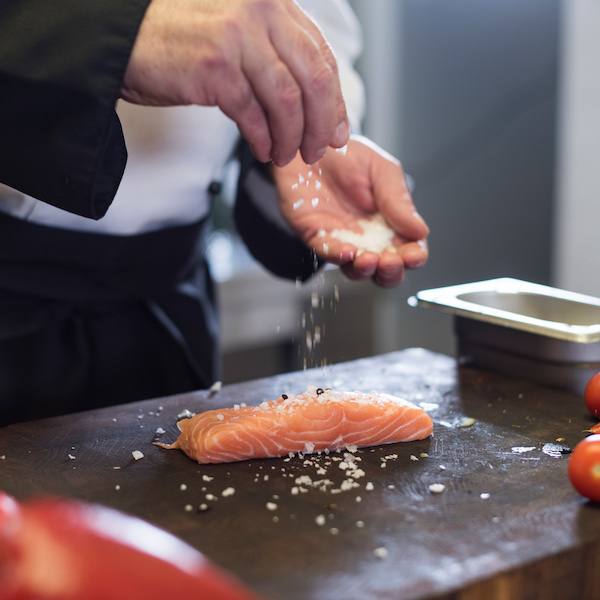Fish farming will play a bigger role in feeding the world’s population
Salmon farms represent about .05 percent of the entire B.C. coast, they have been tucked away in the bays and fiords along the vast B.C. marine coastline for almost 30 years. Over time salmon farming, part of B.C.’s aquaculture industry, has quietly become the province’s largest agricultural export.
One of the most pristine coastlines in the world, the pacific waters of B.C. is teeming with healthy sea life. In these waters tonnes of farm raised salmon are reared and harvested yearly for the kitchens of North America, and the kitchens of a growing Asian market.
Fresh farm raised salmon is a sustainable, healthy food source, always fresh every single day, from the time it leaves the waters to the time it gets packaged takes less than 2 minutes. The salmon then travels on ice to kitchens across North America.
BC salmon gets to Asia within 36 to 48 hours of being harvested.
BC farm raised salmon is now the consumer’s choice of 70 percent of salmon lovers worldwide. The more we produce locally the better for the economy and of course the better for feeding people more nutritious foods while alleviating the strain on wild seafood.
Fish farming is not about replacing wild fish, it is about providing an alternative so that people can have good quality food that is farmed for them, that is farmed responsibly.
Most chefs love working with BC salmon for a few reasons:
Higher healthy fat contents make it easier to work with, and gives the customer quality and quantity for their dollar
B.C farm raised salmon is always fresh
B.C. farm raised salmon is always available
B.C. farm raised salmon is a controlled, monitored industry
Proven science is applied, fish is grown responsibly, there is transparency, and there is traceability where every fish can be traced back to its origins, it is a sustainable seafood that leaves the smallest environmental footprint compared to all agricultural industries.
We all know salmon is a super food, it is high in omega 3 fatty acids, which helps reduce disease and strokes.
Safety and hygiene of the fish is number one, nets are cleaned regularly top to bottom, underwater cameras monitor guarding against over feeding, ensuring a lower impact on the ocean floor and a cleaner safer habitat for the fish.
Safety is number one, not just the staff and facilities but the resource, the stocks and the water.
All predictions point to global warming reducing the wild fish population in the world, that combined with overfishing today means farm raised fish will play a bigger role in feeding the world’s population.
Related Links:
Opinion: If we want to keep eating fish we need to farm it — responsibly
More countries around the world turning to fish farms: UN
